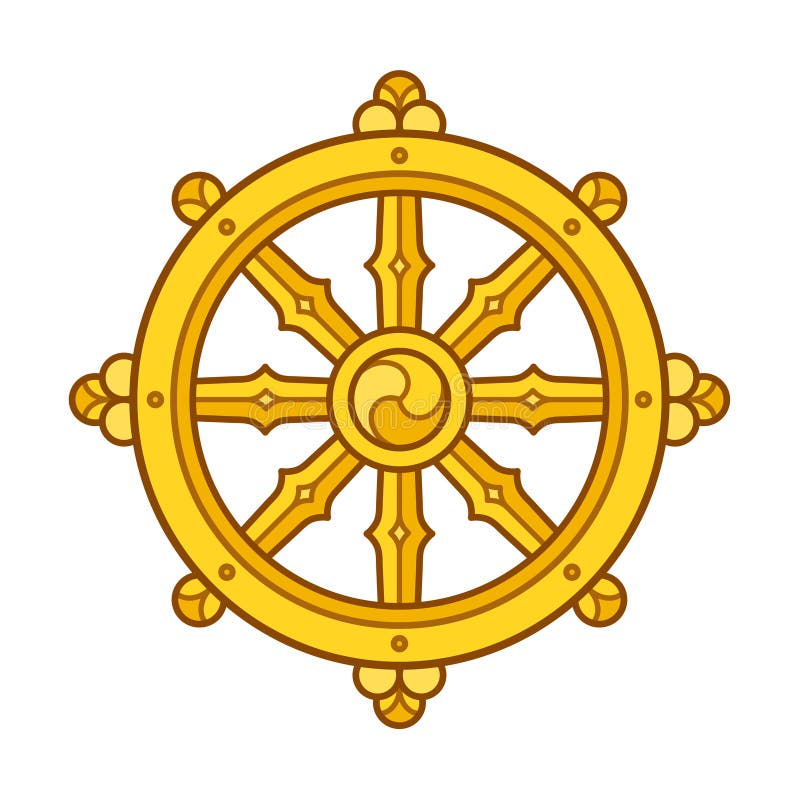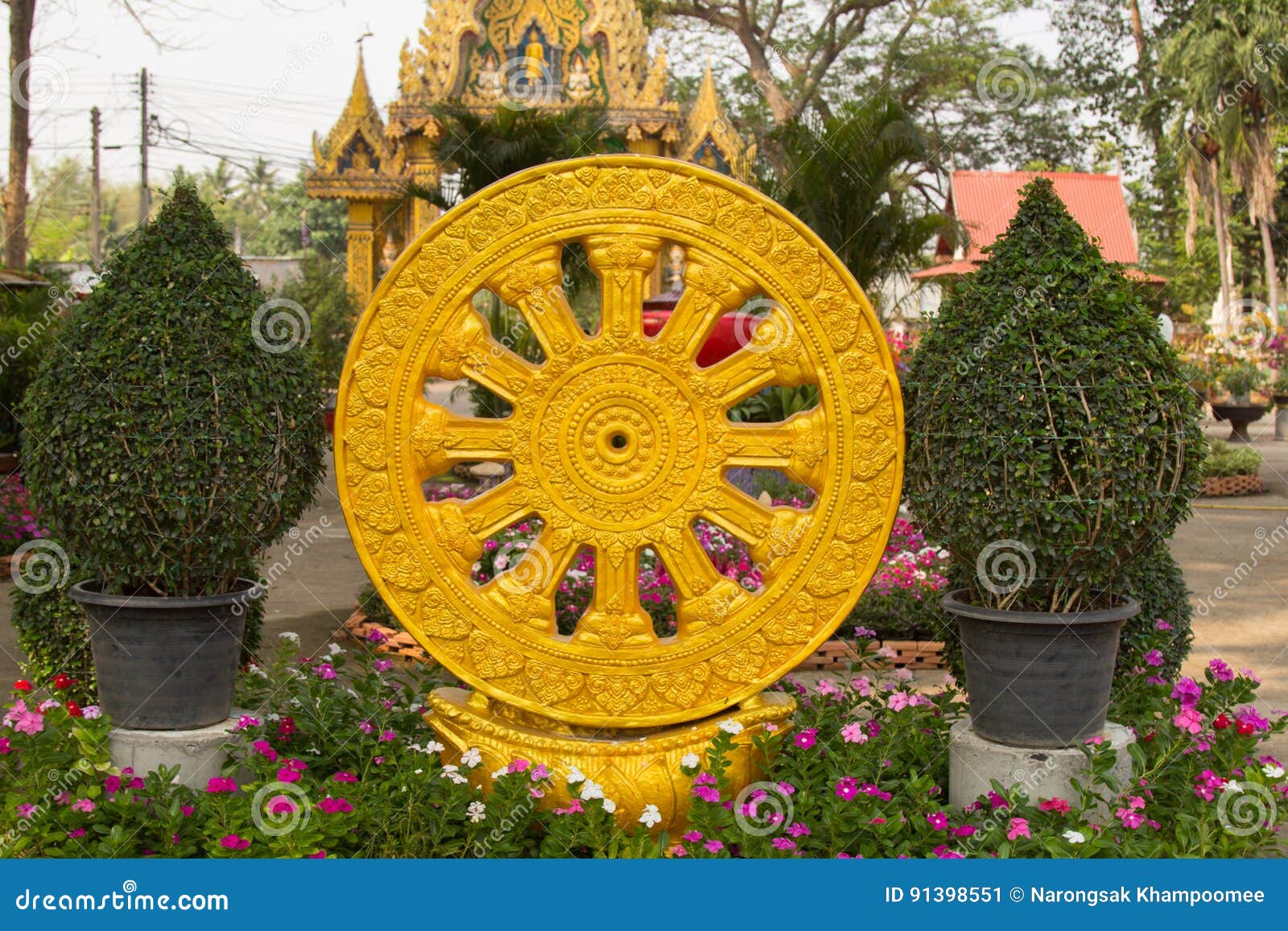

The eight spokes represent the Noble Eightfold Path of Buddhism. The simpler form of the wheel of life has eight spokes and is primarily used only in Buddhism rather than in all the dharmic religions. These are the evils which are responsible for the trapping of souls within the Six Realms.

The rooster represents ignorance or delusion. The pig represents greed, desire, or attachment. In the hub, the center of the wheel, a pig, snake, and rooster turn in a circle, each biting the tail of the next animal. The other side is the Dark Path, which represents how souls may move downward to the World of Hell. One side is the White Path or Path of Bliss, and represents how souls may move upward to the World of Gods. The rim of the hub is divided into two sides. In Buddhist representations of the wheel, within each of the Six Realms, there is always at least one buddha or bodhisattva depicted, trying to help souls find their way to nirvana. Sometimes, the wheel is represented as only having five spokes because the World of the Devas and the World of the Asuras is combined into a single world. Between the World of Animals and the World of Hungry Ghosts, at the very bottom of the wheel, is the World of Hell.

The World of Animals and the World of Hungry Ghosts is always in the bottom half of the wheel, with the World of Animals bordering the World of Humans and the World of Hungry Ghosts bordering the World of Asuras.
The World of Asuras and the World of Humans are always in the top half of the wheel, bordering the World of Devas on opposite sides, but which of the two is on the left and which is on the right varies (leading to two different arrangements of the wheel). The World of Devas is always at the very top of the wheel.
#Dharma the wheel of life buddhism license#
WOD grants 3rd parties an identical License to republish only the first three paragraphs of any article, without edit, providing credit to the WOD and the Buddhist Churches of America including a hyperlink to the article in the WOD.The Wheel of Life, a Buddhist painting from Bhutan WOD grants 3rd parties an identical License to republish its articles so long as the article(s) is republished in its entirety, without edit, providing credit to the WOD and the Buddhist Churches of America.Īuthors who submit articles for publication in the Wheel of Dharma online (“WOD”) thereby grant WOD a royalty-free non-exclusive paid up license, worldwide, in perpetuity and in all media (the “License”) to use, edit and republish the article(s) and to grant sub-licenses to any 3rd party to do so on the same terms. Authors who submit articles for publication in the Wheel of Dharma (“WOD”) thereby grant WOD a royalty-free non-exclusive paid up license, worldwide, in perpetuity and in all media (the “License”) to use, edit and republish the article(s) and to grant sub-licenses to any 3rd party to do so on the same terms.


 0 kommentar(er)
0 kommentar(er)
